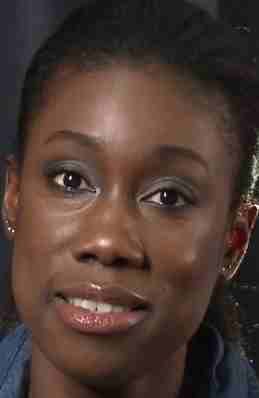let's rethink the
MESSAGES WE SEND TO WOMEN AND GIRLS

by
DESIREE DE JESUS
__________________________________________________________________________________________
Desirée
de Jesus is a Concordia University Public Scholar, video essayist,
and PhD Candidate in the Mel Hoppenheim School of Cinema. She
researches representations of marginalized girls and women in
popular culture.
Can’t
imagine hearing this request during a job interview? Well I did.
I was a teenager applying for a summer cashier job for a multinational
media and entertainment company. Back then, I wore my textured
natural hair in “locs,” a hairstyle you’ve probably
seen on Ava Duvernay, the award-winning filmmaker. Sad and puzzled,
I glanced at my reflection as I left the store: I was dressed
professionally and my hair was styled neatly, so why weren’t
my communication skills and film knowledge enough?
Sadly,
experiences like mine are more common than you might think. Throughout
much of the world, girls’ and women’s appearances
are used as excuses to marginalize them. In some schools, this
policing of girls’ appearances includes rules that characterize
girls’ bodies as sexual distractions that prevent boys from
learning. To mark the International Day of the Girl Child Oct.
11, I want to talk about why it’s vital that we challenge
and change these attitudes.
Last
year, girls from high schools in Montreal and across Canada protested
these discriminatory dress codes. Many argued that instead of
fostering productive learning environments that benefited all,
the rules unfairly targeted girls and normalized sexist behaviour.
For many girls and women of colour, these school and workplace
dress codes all too often are applied in a way that imposes the
additional burden of conforming to a beauty standard that requires
them to straighten their hair, wear straight-hair extensions,
or face disciplinary actions.
With
pressing problems like child marriage and forcible displacement,
it’s easy to think that issues like implicit bias and sexism
aren’t as important. But letting discrimination continue
in contexts that are supposed to empower and educate girls has
consequences. It marks certain spaces in society as off-limits.
It teaches girls to anticipate a future in which they’ll
be blamed for attracting unwanted attention, discrimination and
sexual violence. It also shows boys that they’re not responsible
for their own behaviour.
A recent
art exhibition titled What Were You Wearing? at the University
of Kansas, pairs sexual assault survivors’ accounts with
clothing matching the description of what they were wearing when
attacked. It interrogates the common misconception that survivors’
appearances “provoke” sexual violence. The inclusion
of children’s clothing in the exhibit is particularly troubling.
It reveals links between the logic informing dress codes that
target girls and victim-blame assault survivors.
One might
be tempted to think this sexist practice only affects “certain
kinds” of girls or women. However, in just the past two
months, three public figures —television meteorologist Kelsey
McEwen and MPs Catherine McKenna and Celina Caesar-Chavannes —
have confronted appearance-based gender discrimination. After
receiving a body-shaming tweet calling her maternity clothing
“disgusting,” McEwen told viewers women’s bodies
should not be a public concern.
Not long
after, McKenna challenged politician Gerry Ritz’s use of
a gendered stereotype (“climate Barbie”) to describe
her appearance and devalue her societal contributions. And, in
her parliamentary address, Caesar-Chavannes discussed the prevalence
of body-shaming, and wore cornrowed extensions in solidarity with
those who’ve experienced discrimination because of their
hairstyles, headscarves or bodies.
Enough
is enough. It’s time for people of all genders to think
about the messages we send girls and women. Actively working to
remove implicit cultural, gender and racial biases from our dress
codes and attitudes toward girls and women affirms their personhood
and inherent value.
Even
though most of us may never have public platforms like McEwen,
McKenna, and Caesar-Chavannes we still have a responsibility to
each other to make a difference within our spheres of influence.
Our future depends on it.